
This parent guide supports parents in helping their child at home with 1st Grade ELA content.
- Subject:
- English Language Arts
- Material Type:
- Curriculum
- Reference Material
- Vocabulary
- Author:
- Rachel Wright Junio
- Date Added:
- 04/25/2023

This parent guide supports parents in helping their child at home with 1st Grade ELA content.

These resources accompany our Rethink 1st Grade ELA course. They include ideas for use, ways to support exceptional children, ways to extend learning, digital resources and tools, tips for supporting English Language Learners and students with visual and hearing impairments. There are also ideas for offline learning.

This unit was created by the Rethink Education Content Development Team. This course is aligned to the NC Standards for 1st Grade ELA in Writing.
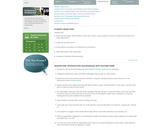
In this lesson, students will write free-verse acrostic poems about themselves using the letters of their names to begin each line. They then write an additional acrostic poem about something that is important to them. After proofreading, both poems are recopied or typed and illustrated and then mounted on construction paper for display. Several opportunities for sharing and peer review are incorporated.
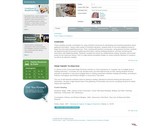
Using a wide variety of nonfiction literature, students learn to sort and categorize books to begin the information-gathering process. Then, working with partners and groups, using pictures and text, students are guided through the process of gathering information, asking clarifying questions, and then enhancing the information with additional details. Students complete the lesson by collaboratively making “Question and Answer” books for the classroom library.
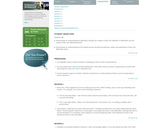
In this lesson, students will use mentor texts and will construct a definition of alliteration. Using these texts as models, students experiment with creating alliterative sentences.
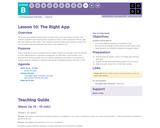
This lesson has students recognize that computer science can help people in real life. First, students empathize with several fictional smartphone users in order to help them find the “right app” that addresses their needs. Then, students exercise empathy and creativity to sketch their own smartphone app that addresses the needs of one additional user.
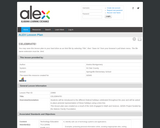
Students will be introduced to the different federal holidays celebrated throughout the year. They will work collaboratively to research information and images related to the federal holidays. They will then place pictorial representations of the holidays on a timeline.
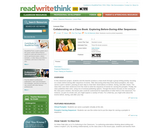
Students and the teacher produce a class book through a group-writing activity, focusing on a basic before-during-after sequence of events. After discussing what they know about pumpkins, the class carves a jack-o-lantern, pausing at each step to chart their observations on before, during, and after charts. The class then uses their sentences from the chart to write the sequence of events for carving the pumpkin. Finally, the class publishes their work, using one of several publishing options.

In this lesson, students complete two prewriting activities, one on brainstorming ideas using story maps, and one on creating beginnings of stories. They then work on two collaborative-writing activities in which they draft an "oversized" story on chart paper. Each student works individually to read what has been written before, adds the "next sentence," and passes the developing story on to another student. The story is passed from student to student until the story is complete. In a later lesson Collaborative Stories 2: Revising, the story is revised by the groups.

In this lesson, using a story which has been written collaboratively, students engage in a whole-group revising process by having each student add a sentence at a time. The teacher leads this shared-revising activity to help students consider story content. Students begin by reading their collaborative story and then discuss ways of making changes. Then, after revisions have been made, they reread the story as a group. Finally, students come to a consensus on a title for their story.
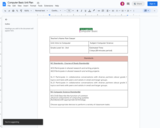
By the end of the lesson, students will be able to identify and describe the function of external hardware, such as desktop computers, laptop computers, tablet devices, monitors, keyboards, mice, and printers. The students will be able to explain each component's function and how it works together.
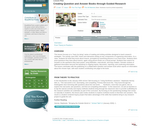
In this lesson, students will use KWL charts and interactive writing as key components of organizing information. As a class, students list what they know about insects, prompted by examining pictures in an insect book. Students them pose questions they have about insects, again using picture books as a visual prompt. Students then search for answers to the questions they have posed, using Websites, read-alouds, and easy readers. Periodic reviews of gathered information become the backdrop to ongoing inquiry, discussion, reporting, and confirming information. The lesson culminates with the publishing of a collaborative question and answer book which reports on information about the chosen topic, with each student contributing one page to the book.
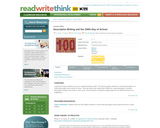
This lesson guides students in writing descriptions of 100th day bottles they create at home. Students will write clues about their bottles for a guessing game, practice descriptive writing, and create a class book. Several pieces of literature appropriate for use with this lesson are suggested.
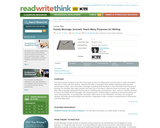
In this lesson, students first write a message to their families explaining what they have learned about a topic. Next, they write a message comparing what they know to new information that they are just learning. Finally, they write a message saying how they feel about something they encountered in class, such as a favorite character in a book.
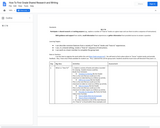
Students will be involved in a group research of "How to" books and videos. Then, they will create their own "How to" writing using See Saw as their on-line creation "house". Students will work in collaborative groups during the entire process and learn how to complete the task as a team. Students will be given daily feedback from their teacher as well as final peer and teacher feedback.
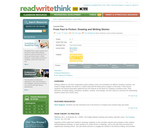
Getting children to use their imaginations when writing a story can sometimes be difficult. Drawing, however, can create a bridge between the ideas in a child's head and the blank piece of paper on the desk. In this lesson, students use factual information gathered from the Internet as the basis for creating a nonfiction story. Story elements, including setting, characters, problem, solution, and endings, are then used as a structure for assembling students' ideas into a fiction story.

Students will use technology to write and share information about their researched cultures. This lesson was developed by Julie Glaser as part of their completion of the North Carolina Global Educator Digital Badge program. This lesson plan has been vetted at the local and state level for standards alignment, Global Education focus, and content accuracy.

Students will research information about a culture in order to teach others about it. This lesson was developed by Julie Glaser as part of their completion of the North Carolina Global Educator Digital Badge program. This lesson plan has been vetted at the local and state level for standards alignment, Global Education focus, and content accuracy.
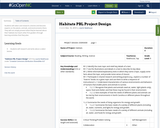
Students will select and research a biome and become experts on the plants, animals, and environments there. They will not simply present what they’ve learned about their habitats but teach other first graders through learning activities that they plan.